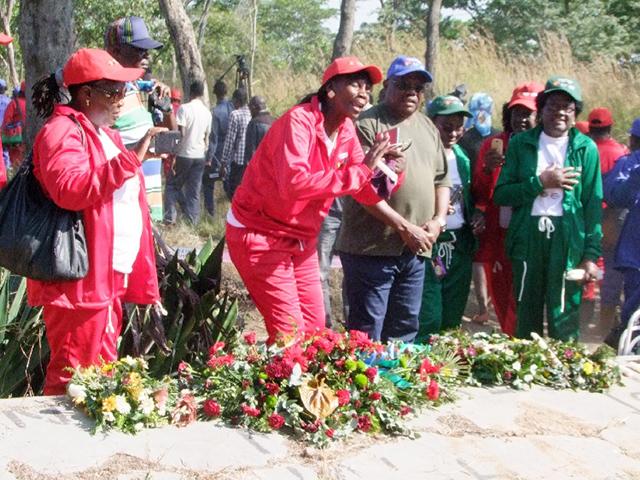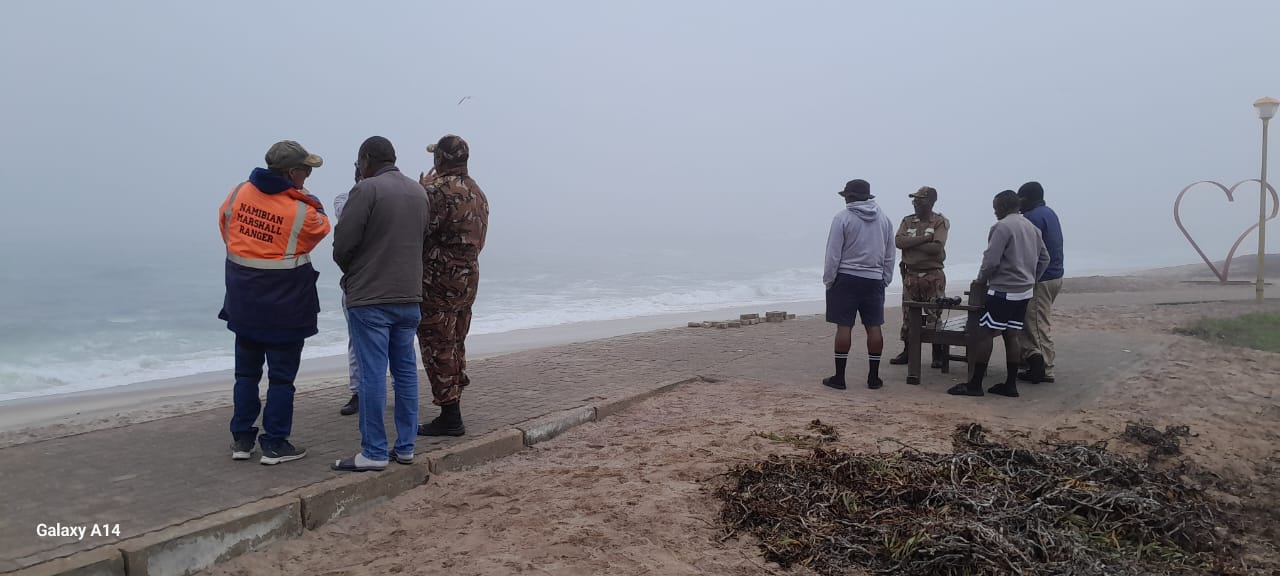THE only real drawback of the proposed desalination plant near Wlotzkasbaken – a first for Namibia – seems to be its visual impact on people driving between Henties Bay and Swakopmund.
Otherwise, the proposed site is considered to be optimal, according to those assessing its social and environmental impact. There was little opposition to the proposed development at a public information meeting held at Swakopmund on Friday.In fact, those attending were rather supportive of the idea, in line with the objectives of sustainable development.Not only would the plant supply the prospective N$3,6 billion Trekkopje Uranium project with water, but also increase the Erongo Region’s water supply.Turgis Consulting from South Africa were commended for their transparency and efficiency in doing the impact assessment.Turgis Chairman Alex du Plessis did admit, however, that some issues still needed to be worked through before the report could be finalised.The biggest challenge in formulating the assessment had been finding a suitable location, Du Plessis said.The most important considerations, besides the economic feasibility of constructing the plant at the right location, were the vulnerable lichen fields, as well as the peaceful and pristine surroundings of Wlotzkasbaken.The issue of “accumulative impact” – which is not just limited to the location of the planned desalination plant, but involves the larger part of the region and the central Namib – was also addressed at the meeting.This impact is directly related to the increase of mining activities in the region – all of which would require infrastructure, resulting in increased activity and development in hitherto unspoilt areas.Du Plessis said existing mines, as well as other stakeholders like NamWater, NamPower and Government, were aware of these problems and were working together to plan for the most effective and sustainable solution.On the lichen fields and the Wlotzkasbaken community’s rights and privileges, the consultants believe there is no better location for the plant than the one proposed.The only definite drawback, they say, is the way it would look, being situated along the road to Henties Bay against the backdrop of a pristine landscape.According to their assessment, however, the infrastructure would hardly infringe on Wlotzkasbaken’s current state.It would also create a protective buffer for the lichen fields and surrounding environment, stopping destructive traffic to the area.Alternative locations were investigated, but were not considered optimal because they would demand longer pipelines, which would be even more costly and disruptive to the environment.The desalination plant is expected to supply the mine with 20 million cubic metres of water annually.The current total annual consumption of the Erongo Region is approximately 12 million cubic metres, with Walvis Bay (4,3 Mm³), Roessing Uranium (3,3 Mm³) and Swakopmund (3 Mm³) as the three major consumers.UraMin – the owner of the Trekkopje Mine – and NamWater are co-operating closely in the planning and implementation of the plant, said Du Plessis.He said the desalination plant would eventually be able to produce 45 million cubic metres of desalinated water a year, which would not just be for the mine, but would also be used by residents and other economic sectors in the region.It might also become a water source to other mines in the vicinity.Trekkopje Uranium Mine is expected to go into full operation by mid-2009.It is hoped that construction work on the desalination plant will begin early next year.”There have been proposals to build desalination plants in the past, but nothing has come of them.People have become suspicious, but our project isn’t just a pipe dream; it is real, and we are enjoying a lot of support from the communities,” Du Plesiss told The Namibian.There was little opposition to the proposed development at a public information meeting held at Swakopmund on Friday.In fact, those attending were rather supportive of the idea, in line with the objectives of sustainable development.Not only would the plant supply the prospective N$3,6 billion Trekkopje Uranium project with water, but also increase the Erongo Region’s water supply.Turgis Consulting from South Africa were commended for their transparency and efficiency in doing the impact assessment.Turgis Chairman Alex du Plessis did admit, however, that some issues still needed to be worked through before the report could be finalised.The biggest challenge in formulating the assessment had been finding a suitable location, Du Plessis said.The most important considerations, besides the economic feasibility of constructing the plant at the right location, were the vulnerable lichen fields, as well as the peaceful and pristine surroundings of Wlotzkasbaken.The issue of “accumulative impact” – which is not just limited to the location of the planned desalination plant, but involves the larger part of the region and the central Namib – was also addressed at the meeting.This impact is directly related to the increase of mining activities in the region – all of which would require infrastructure, resulting in increased activity and development in hitherto unspoilt areas.Du Plessis said existing mines, as well as other stakeholders like NamWater, NamPower and Government, were aware of these problems and were working together to plan for the most effective and sustainable solution.On the lichen fields and the Wlotzkasbaken community’s rights and privileges, the consultants believe there is no better location for the plant than the one proposed.The only definite drawback, they say, is the way it would look, being situated along the road to Henties Bay against the backdrop of a pristine landscape.According to their assessment, however, the infrastructure would hardly infringe on Wlotzkasbaken’s current state.It would also create a protective buffer for the lichen fields and surrounding environment, stopping destructive traffic to the area.Alternative locations were investigated, but were not considered optimal because they would demand longer pipelines, which would be even more costly and disruptive to the environment.The desalination plant is expected to supply the mine with 20 million cubic metres of water annually.The current total annual consumption of the Erongo Region is approximately 12 million cubic metres, with Walvis Bay (4,3 Mm³), Roessing Uranium (3,3 Mm³) and Swakopmund (3 Mm³) as the three major consumers.UraMin – the owner of the Trekkopje Mine – and NamWater are co-operating closely in the planning and implementation of the plant, said Du Plessis.He said the desalination plant would eventually be able to produce 45 million cubic metres of desalinated water a year, which would not just be for the mine, but would also be used by residents and other economic sectors in the region.It might also become a water source to other mines in the vicinity.Trekkopje Uranium Mine is expected to go into full operation by mid-2009.It is hoped that construction work on the desalination plant will begin early next year.”There have been proposals to build desalination plants in the past, but nothing has come of them.People have become suspicious, but our project isn’t just a pipe dream; it is real, and we are enjoying a lot of support from the communities,” Du Plesiss told The Namibian.
Stay informed with The Namibian – your source for credible journalism. Get in-depth reporting and opinions for
only N$85 a month. Invest in journalism, invest in democracy –
Subscribe Now!










